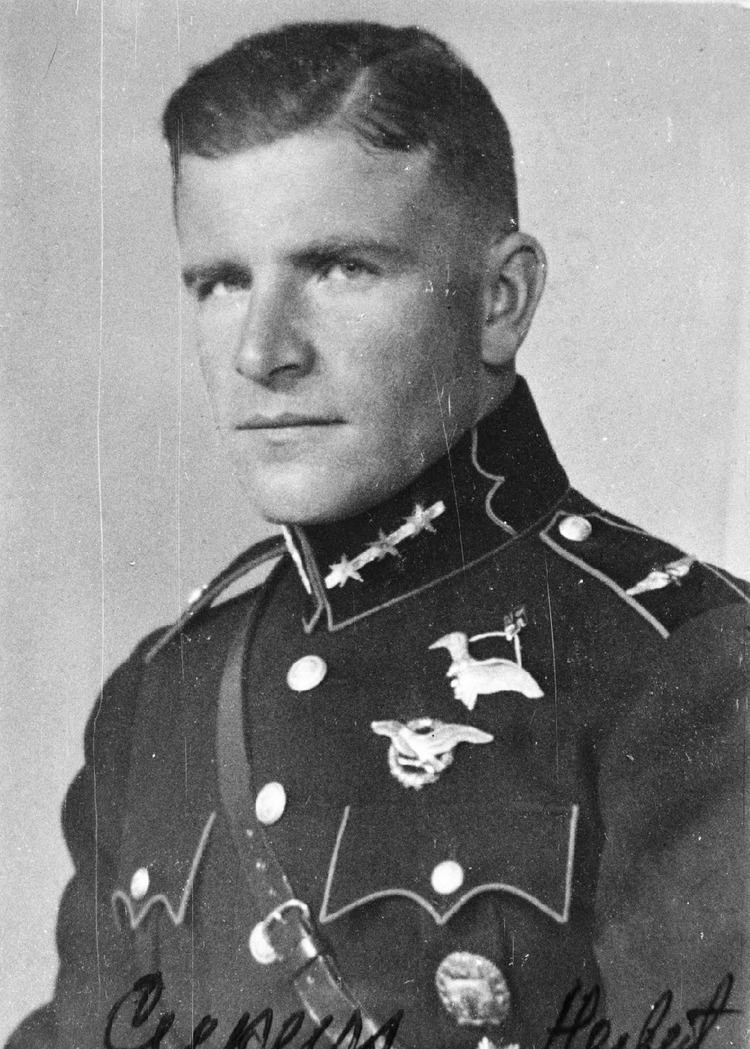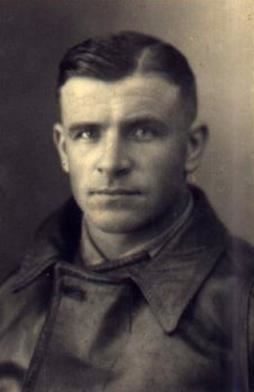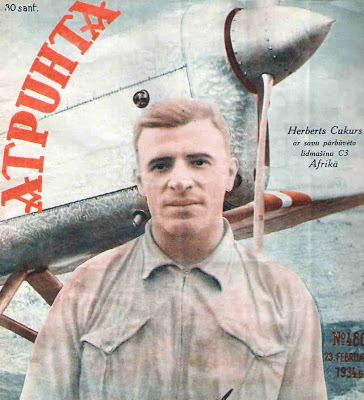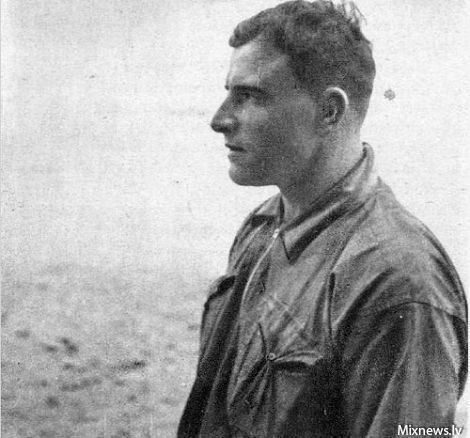Occupation Aviator Name Herberts Cukurs | Role Aviator | |
 | ||
Assassinated February 23, 1965, Montevideo, Uruguay Children Gunars Cukurs, Herberts Cukurs, Ilgvars Cukurs, Antinea Doloresa Cukurs Rizotto Similar People Eugenio Berrios, Yahya El Mashad, Ghassan Kanafani, Wael Zwaiter, Muhammad Youssef al‑Najjar | ||
Cukurs herberts cukurs
Herberts Cukurs (17 May 1900 in Liepāja, Courland Governorate, Russian Empire – 23 February 1965 in Shangrilá, Uruguay) was a Latvian aviator. He was a member of the Arajs Kommando which was involved in the mass murder of Latvian Jews as part of the Holocaust but he never stood trial, though there are eyewitness accounts linking Cukurs to war crimes. He was assassinated by operatives of the Israeli intelligence service (Mossad) in 1965. The Mossad agent Künzle, who killed Cukurs, and the journalist Gad Shimron wrote a book The Death of the Executioner of Riga in which they called Cukurs the "Butcher of Riga", and the term was later picked up by several sources.
Contents
- Cukurs herberts cukurs
- Debesis cukurs herberts cukurs
- Aviation pioneer
- Participation in the Nazi Holocaust
- Postwar flight and assassination
- Attempts at rehabilitation
- References
Debesis cukurs herberts cukurs
Aviation pioneer

As a pioneering long-distance pilot, he won national acclaim for his international solo flights in the 1930s (Latvia-Gambia and Riga-Tokyo). He was awarded the Harmon Trophy for Latvia in 1933, and was considered a national hero, comparable to Charles Lindbergh.

Cukurs built at least three aircraft of his own design. In 1937 he made a 45,000-kilometre (24,000 nmi; 28,000 mi) tour visiting Japan, China, Indochina, India and the Soviet Union, flying the C 6 wooden monoplane "Trīs zvaigznes" (registration YL-ABA) of his own creation. The aircraft was powered by a de Havilland Gipsy engine.

He also designed the Cukurs C-6bis prototype dive bomber in 1940.
Participation in the Nazi Holocaust

During the occupation of Latvia by Nazi Germany in the summer of 1941, Cukurs became a member of the notorious Arajs Kommando, which was responsible for many of the crimes that were committed during the Holocaust in Latvia.
In his book The Holocaust in Latvia, 1941-1945, Latvian historian Andrew Ezergailis writes that Cukurs played a leading role in the atrocities that were committed in the Riga ghetto in conjunction with the Rumbula massacre on 30 November 1941. After the war, surviving witnesses reported that Cukurs had been present during the ghetto clearance and fired into the mass of Jewish civilians.
According to eyewitness sources, Cukurs was the most recognizable Latvian SD man at the scene of the Rumbula massacre. Ezergailis states that "although Arājs' men were not the only ones on the ghetto end of the operation, to the degree they participated in the atrocities there, the chief responsibility rests on Herberts Cukurs' shoulders." Cukurs was described as follows:
The Latvian murderer Cukurs got out of a car wearing a pistol (Nagant) in a leather holster at his side. He went to the Latvian guards to give them various instructions. He had certainly been informed in detail about the great catastrophe that awaited us.
Later Ezergailis retracted these interpretations, saying that in light of new documents, it would be wrong to claim that Cukurs indeed had participated in the Rumbula shooting or the burning of the Riga synagogue. During interviews with the press, Ezergailis stated that there is no evidence that Cukurs had been at the pits at Rumbula, and that it has not been proven that Cukurs was "the most eager shooter of Jews in Latvia".
According to another account, Cukurs also participated in the Burning of the Riga synagogues. According to Bernard Press in his book The Murder of the Jews in Latvia, Cukurs burned the synagogue on Stabu Street, but only after dragging Jews out of the neighboring houses and locking them inside
Eyewitnesses heard the people who were locked inside screaming for help and saw them breaking the synagogue's windows from inside and trying, like living torches, to get outside. Cukurs shot them with his revolver.
Time magazine reported at the time of his death in 1965 that his crimes included the Riga synagogue fire; the drowning of 1,200 Jews in a lake; and his participation in the November 30, 1941 murder of 10,600 people in a forest near Riga.
Postwar flight and assassination
Cukurs had retreated to Germany with German forces.
After the war, Cukurs emigrated to Brazil via France. The Brazilian Consulate in Marseilles issued the visa for permanent residency on December 18, 1945. The visa did not list his wife's name, but it identified three minor children, Gunars, Antinea and Herberts.
There, he established a business in São Paulo, flying Republic RC-7 Seabees on scenic flights. While living in South America, he neither hid nor tried to hide his identity.
He is now known to have been assassinated by Mossad agents, who persuaded him to travel to Uruguay under the pretense of starting an aviation business, after it was found out that he would not stand trial for his participation in the Holocaust. An acquaintance named "Anton Künzle"—in reality, disguised Mossad agent Yaakov Meidad—cabled Cukurs from Montevideo. He was invited to a house in a remote suburb of the city that had just been rented by a man from Vienna. He was shot in the head twice with a suppressed automatic pistol after a short but violent struggle that was not heard by neighbors. His body, found in a trunk on 6 March, presented several gunshot wounds elsewhere, and his skull was shattered. Next to his body, several documents were left pertaining to his involvement in the murder of Jews in the Riga Ghetto.
Media outlets in South America and Germany received a note stating:
Taking into consideration the gravity of the charge leveled against the accused, namely that he personally supervised the killing of more than 30,000 men, women and children, and considering the extreme display of cruelty which the subject showed when carrying out his tasks, the accused Herberts Cukurs is hereby sentenced to death. Accused was executed by those who can never forget, on the 23rd of February, 1965. His body can be found at Casa Cubertini Calle Colombia, Séptima Sección del Departamento de Canelones, Montevideo, Uruguay.
The note was initially dismissed as a prank, but then police were notified and the body was discovered.
Attempts at rehabilitation
Since the fall of Communism, there have been efforts in Latvia to rehabilitate Cukurs. For example, an exhibition was held in Riga in honour of the "national hero" Herberts Cukurs, in which his work in the Arajs Kommando was portrayed as having been harmless.
The Latvian Foreign Minister Artis Pabriks condemned the issuance of postal envelopes dedicated to Cukurs in 2004. In a statement, Pabriks said that "those who produced such envelopes in Latvia evidently do not understand the tragic history of World War II in Latvia or in Europe". The foreign ministry stated that Cukurs was "guilty of war crimes", and that he "took part in the activities of the notorious Arajs Kommando, which participated in the Holocaust and was responsible for the killing of innocent civilians. The General Prosecutor's Office of Latvia has twice rejected the exoneration of Herberts Cukurs".
